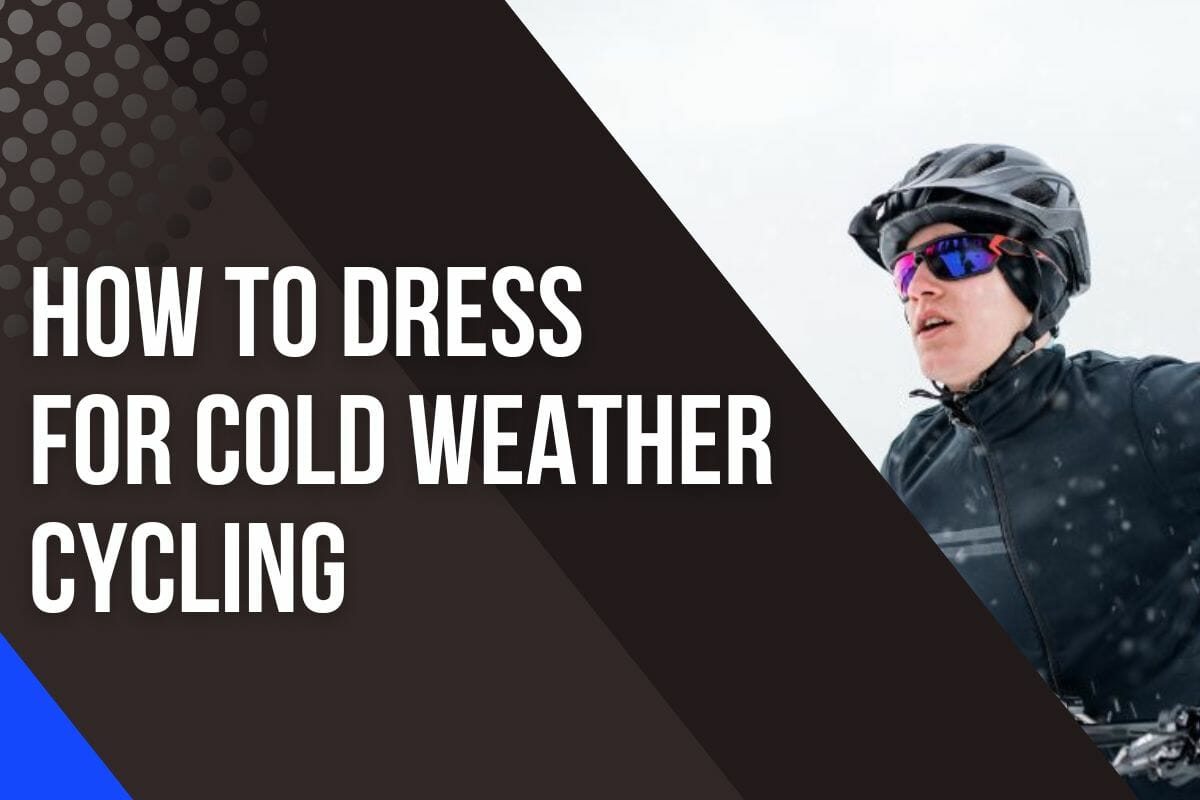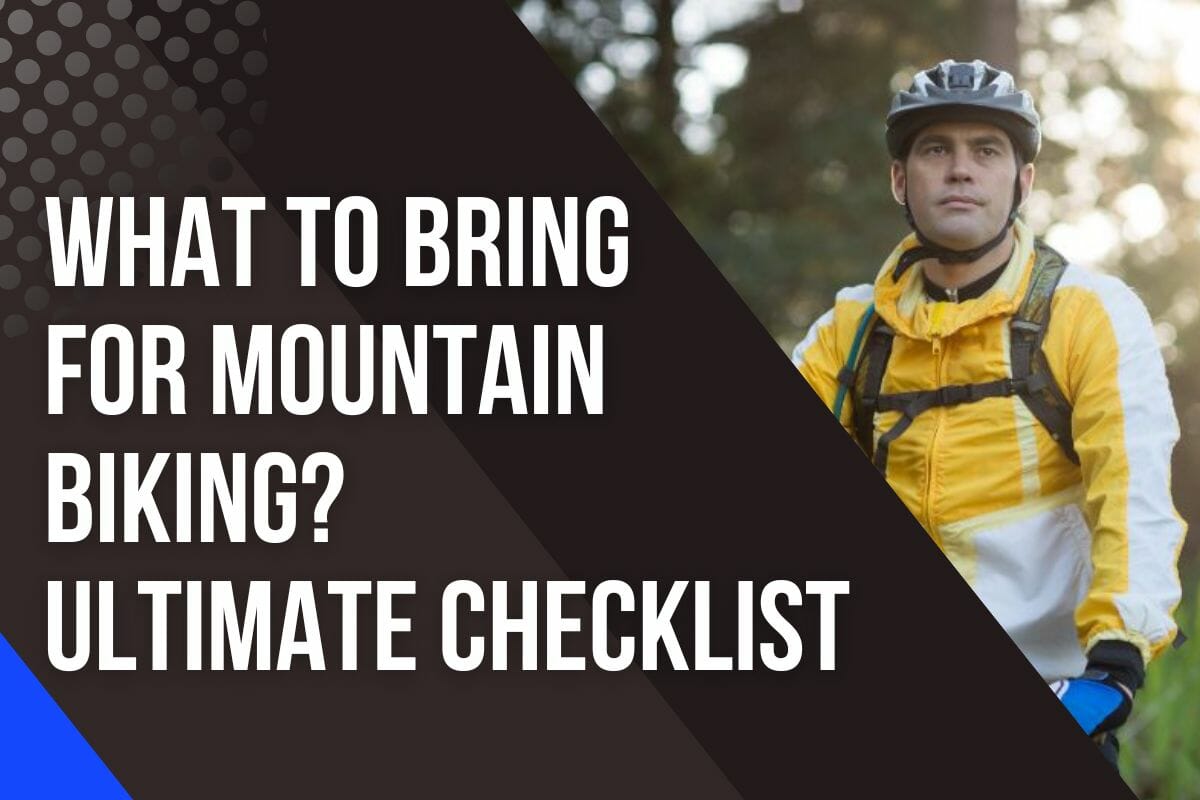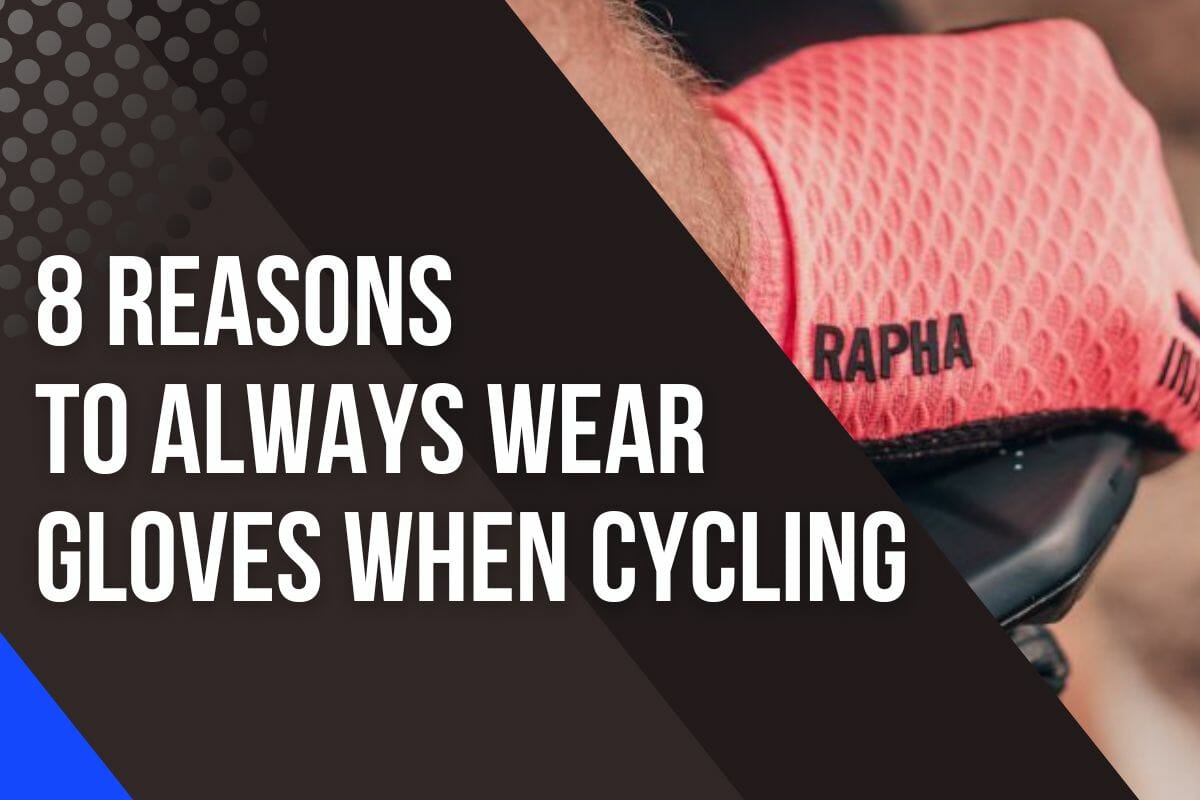How To Dress For Cold Weather Cycling

As winter approaches, cyclists face a particular challenge: how to stay warm and safe during cold weather rides.
Dressing for the cold can be tricky, but with the right tips and gear, you’ll have no trouble staying warm and comfortable on your winter rides.
From layers to headwear to gloves, this guide will give you all the knowledge you need to dress for success when cycling in cold weather.
So grab your bike and get ready – it’s time to hit the road in style!
The Need For Layering
When it comes to cold weather cycling, dressing in layers is key for staying warm and comfortable.
Layering can help you adjust your temperature as needed and protect against the elements.
The layering technique involves wearing multiple pieces of clothing that work together to keep you warm without overheating or feeling uncomfortable.
Start with a base layer such as merino wool or synthetic material that will wick moisture away from your body while keeping you dry and insulated.
Next, add mid-layers like fleece sweaters or jackets designed specifically for winter cycling to provide extra warmth.
Finally, top off the outfit with an outer shell made of windproof material that blocks out the chilliest conditions.
When selecting items for your winter cycling wardrobe, consider investing in quality cold-weather apparel made specifically for cyclists who need protection against extreme temperatures and harsh winds.
Below, I’ll explain each in more detail.
Layer For Upper Body
When it comes to cycling in cold weather, layering up is essential.
Start with a technical base layer made from synthetic materials like polyester or merino wool designed to wick away sweat and keep you warm even when wet.
Base Layers
The base layer, often the first piece of clothing for upper body warmth on any ride, is critical in achieving the proper layered balance between comfort and protection from chilly outdoor conditions.
Your base layer is the only fabric directly in contact with your skin, so its thermal regulating properties are paramount.
Traditional wisdom dictates that the thicker and heavier a winter base layer is, the better job it will do of trapping heat around your body.
However, there is an alternative: rather than relying solely on insulation for warmth, try layering up items with both high and low thermal ratings depending on their proximity to your skin.

By alternating between materials that provide different levels of insulation and underlying temperature control, you can create an optimal blend of comfortably regulated warmth across your entire upper body.
To take advantage of this approach to winter layering, you must invest in a good quality base layer that meets not just insulative requirements but also moisture-wicking ability and breathability.
Soft fleeces or woolens are ideal fabrics for lower thermal ratings; finely woven synthetics or lightweight Merino wool offer higher protective coverage but still allow breathability to reduce clamminess while keeping you warm over extended rides.
The right choice of base layer will keep your skin dry and provide optimal levels of comfort whatever Mother Nature throws your way.
Mid Layers
Layering is one of the most efficient ways to stay comfortable when running, as it provides both protection and insulation.
One of the key layers for this is the mid-layer; these are designed to adjust to changing weather conditions, including temperature fluctuations.
These garments can typically come in lightweight jerseys or medium-weight long-sleeve jerseys.
Heavier and warmer mid-layers are perfect for colder days or the winter season.

These provide warmth while still allowing your body to move and breathe.
Mid-layers are not only useful for regulating body heat during runs, but they also act as a barrier between other layers.
This helps keep sweat away from your skin, so when you’re done running all you need to do is take off the upper layers and head home!
It’s important to have a few different mid-layers for varying temperatures throughout the year so that you can stay comfortable whatever the weather.
Outer Layer
The last piece of the puzzle to keep your upper body warm while winter cycling is a good outer layer.
This should be something windproof, as cold winds can sap away at your heat and make you feel chilled.
When selecting an outer layer for winter cycling it’s important to consider how much protection from the elements you need.

If you’re going out on longer rides when temperatures drop below freezing then a thermal jacket may be necessary, but if you’re only riding short distances then a lighter-weight option such as a softshell jacket could suffice.
Therefore, what type of outer layer you choose ultimately depends on the climate in which you’ll be cycling, and how long you plan on being outside.
Consider these factors carefully before making your selection, so that you can stay comfortable and enjoy your ride even during the coldest months of the year!
Layer For Lower Body
Layering your legs correctly can make a huge difference to riding comfort and efficiency in cold weather.
It is important to consider what materials are used, as too many layers or the wrong fabrics can diminish your pedaling stroke as well as restrict movement.
The ideal legwear for colder temperatures is built up with two to three thinner layers, allowing you to retain your freedom of movement.
This could consist of any combination of tailored trousers, multi-function tights, and leggings.
Trousers provide a more streamlined silhouette and you may even choose to layer them over tights or leggings depending on the level of warmth needed.

They’re perfect for keeping your feet warm and dry in cold weather conditions – no more numb toes!
Multi-functional tights are a great option as they offer extra protection but also allow the skin to breathe at the same time.
These are often made from thermal fabrics that respond to changes in temperatures and body movement so that you’re kept warm but not overheated when exercising.
Leggings are also useful for providing extra warmth on those chillier rides and look especially good teamed with jackets or vests which will match their tapered lower parts.
To ensure extra protection from the wind, consider wearing windproof pants over your bib tights or leg warmers with the following properties:
- Waterproof Materials: Look for waterproof materials like nylon or polyester with a DWR coating so water will bead off rather than soak into the fabric.
- Wind Resistant Fabric: Choose highly compressive fabrics with multiple layers lined with fleece to block wind gusts while still allowing freedom of movement at the knee joint.
- Thermal Insulation: Look for designs made of thicker fabrics such as Goretex which are designed to trap heat close to your skin and reduce any chance of chills occurring during your ride.
Protect Your Feet
Your feet are essential for your comfort and safety while out on a ride in winter conditions.
So, let’s start with what type of footwear protection you should use when cycling in colder temperatures.
Overshoes And Winter Boots
When cycling in cold weather, overshoes and winter boots provide an important layer of thermal insulation.
Overshoes are designed to fit tightly over your normal cycling shoes, keeping your feet warm while still allowing you access to the cleats for pedaling power.
Winter boots offer additional waterproofing and insulated soles that provide extra warmth on a cold day.
They come with either two- or three-bolt cleat systems so you won’t have to give up pedaling efficiency when trying to keep your toes warm!

Overshoes typically use neoprene material which is thick enough to insulate but thin enough not to impede movement when walking around off the bike.
Look for ones with reflective panels and zips at the back or side for easy entry as well as tight cuffs at the ankle – this will help prevent water from getting in from underneath.
You can also buy toe covers made from similar materials if you don’t need full foot protection (but still want some extra warmth).
Winter boots should be chosen based on the conditions you’re likely to encounter.
If it’s going to be wet, look for those with sealed seams and waterproof membranes such as GoreTex.
They’ll protect against wind chill while keeping your feet dry.
Insulated soles are great for colder temperatures too – these will reduce heat loss through contact with the ground and make sure your feet stay comfortable no matter how low the mercury drops outside!
To maximize comfort and performance make sure whatever footwear option you choose provides good support, fits snugly without constricting circulation, keeps out moisture, and offers plenty of insulation against extreme temperatures.
With proper preparation like this, nothing is stopping you from enjoying safe and enjoyable rides even during harsh winter months!
Socks
When it comes to cycling in cold weather, having the right socks is key.
The material of your socks should be thick enough to provide insulation from the elements and keep your feet warm.
Look for a sock that is made from Merino wool, as this type of fabric provides superior warmth and comfort.
Make sure the thickness is appropriate for your climate; if you’re riding in an area with extremely cold temperatures, then opt for thicker socks.
Additionally, make sure the socks are long enough to cover any exposed skin on your lower leg or ankle.
Protect Your Head At All Cost
As someone who cycles in the winter months, I understand the importance of head coverage.
Keeping my head warm is essential for retaining body heat and preventing frostbite.
When choosing headgear for cycling during the colder months, it’s important to remember that what works best depends largely on the type of ride and conditions you’ll be facing.
Headwear
Winter hats like beanies and balaclavas are essential for keeping your head warm during a ride.
Not only do they help keep you insulated against wind chill but they also protect your ears from frostbite on colder days.
If you’re looking to protect your face while riding, getting yourself a good quality cycling cap can make all the difference – one with ear flaps will be great for icy conditions.

Your choice of material is important too; wool or synthetic fabrics are usually best as they provide insulation even when wet.
Look out for ones that feature breathable membranes and adjustable straps so you can adjust them according to how hot or cold you’re feeling.
Don’t forget about visibility: choose bright colors so cars and other cyclists can spot you easily at night!
Don’t Forget Your Neck
When it comes to cold weather cycling, the neck is an often overlooked area.
It can easily be forgotten but plays a vital role in keeping you warm and comfortable during your ride.
Without proper protection from the elements, your neck will suffer from chills that could put a damper on your outing.
The good news is there are several options for keeping your neck warm while out riding in cold temperatures.
Here are some items to consider:
- Neck Warmers: These are simple pieces of fleece or wool fabric designed to cover your entire neck area when worn around the base of your head like a horseshoe. They provide extra warmth without restricting movement or breathing.
- Neck Gaiters: Also known as balaclavas, these garments cover both your face and throat with one piece of material that’s flexible enough to move with you as you pedal. They offer excellent wind resistance while still allowing breathability so you don’t overheat during high-intensity efforts.
- Scarfs: Longer than average scarves, scarf wraps wrap fully around the neck providing additional warmth and comfort without being too bulky or heavy.
Gloves
Gloves are an essential part of a cyclist’s winter wardrobe.
They protect your hands from the cold and help to prevent blisters and provide extra grip on handlebars or brake levers.
When shopping for cold-weather cycling gloves, there are several key features to look out for.
I always make sure to invest in a good pair of thick, water-resistant, or even waterproof gloves when the temperature drops.

Keeping my fingers warm is key to being able to operate both gears and brakes, so I look for gloves that keep my hands protected while allowing freedom of movement.
On days when temperatures are really low, I opt for insulated winter cycling gloves with windproof fabric and reflective detailing to increase visibility in low-light conditions.
For wet weather, I choose a thicker glove with waterproof material and an insulating lining to keep my hands warm and dry during my ride.
No matter what kind of glove you choose, make sure it fits properly and allows a full range of movement so you can maintain control of the bike.
Also, ensure that it has a good grip, so you won’t lose hold during sudden movements or terrain changes.
Eyewear
I always wear glasses while riding to protect my eyes from the sun and debris, but as the weather gets colder I need more protection.
Cycling glasses are designed for comfort and style with a lightweight frame that won’t get in your way as you cycle.
Many come with interchangeable lenses so you can adjust them depending on the conditions outside.
They also protect against wind, dirt, and debris that could otherwise cause irritation or discomfort when riding.
In the cold months, I prefer lenses that are designed for low light conditions or even clear lenses so that I can see clearly and safely in the dark.

The lens shape also matters; I choose a cylindrical or wrap-around style lens for maximum coverage and wind protection.
Additionally, when temperatures are really low, I make sure to pair my glasses with a warm hat or headband to keep my ears covered and hold them in place against the wind.
With these protective measures in place, I’m ready for anything that winter weather throws at me!
Goggles are an excellent choice if you know there will be snow or rain during your ride.
Goggles have a large wrap-around design that provides full coverage of the eyes, protecting them from any harsh weather conditions like wind, rain, and snow.

The lenses are usually made out of shatterproof polycarbonate material which offers maximum impact resistance for added peace of mind.
Finally, cycling sunglasses offer great eye protection without compromising on style – perfect for bright sunny days but also useful in colder temperatures too!
Look for a pair that has UV-400 filters to block UVA/UVB rays; polarized lenses to reduce glare; adjustable rubber nose pads to prevent slipping; and side shields to help keep the wind away from your eyes whilst riding at speed.
With these features combined, they’re sure to keep your eyes safe throughout your journey no matter what Mother Nature throws at you.
Effects Of Cold Weather On Cycling Performance
It is well known that performance can suffer greatly when players are either too hot or too cold.
This is especially noticeable in professional cycling, where riders will often be cloaked in multiple layers at the start of a race only for the camera to later show them dressed in nothing more than shorts and jersey, a sign of the conditions hitting their peak intensity.

It’s all about balancing your attempt to stay comfortable with your performance needs.
Getting dressed as if you’re going to be cold from the beginning allows you to maintain your core temperature even when facing higher-intensity effects.
Although this may feel uncomfortable initially, sticking with proper layering clothing systems can prevent any significant drops in performance related to external temperature swings.
Riding In The Rain
Riding in the rain can be a fun and satisfying experience, but it’s important to dress appropriately for the conditions.
I usually stick to wearing a hardshell or windproof jacket as my outer layer, as this helps keep me dry even in torrential downpours.
Underneath that, I like to wear a base layer of merino wool, which helps keep me warm and comfortable while also wicking away any sweat.

Finally, I like to add waterproof knee warmers and arm warmers if it is really cold out, as they help provide extra insulation and warmth without adding too much bulk.
All these layers are essential when riding on wet roads; not only do they keep you dry but they also provide an extra level of safety by increasing your visibility in bad weather conditions.
Final Thoughts
Dressing for cold weather cycling can be a challenge.
But with the right preparation and gear, you’ll be able to stay warm and safe on your ride.
It all starts with layering up; wear breathable materials that will insulate your body while wicking away sweat as you pedal.
A good head covering is essential – it should fit snugly under your helmet and keep wind gusts at bay.
Don’t forget about gloves, gaiters, and booties too – these will help protect your extremities from the chill of the outdoors.
Finally, make sure to use cycling eyewear – they’ll provide protection against debris kicked up by passing vehicles or strong winds.
With the proper precautions taken, you’ll be ready to take on any winter rides with confidence!





